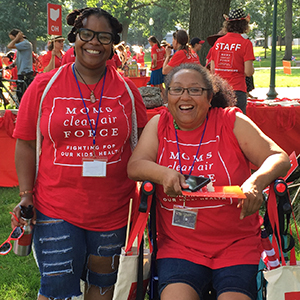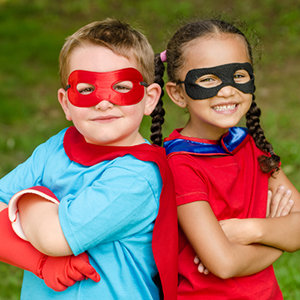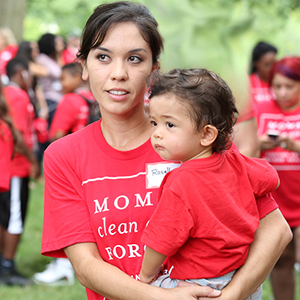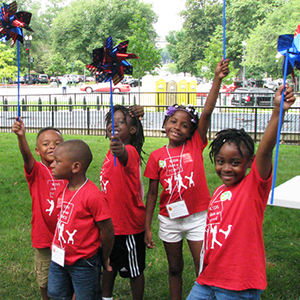
When I told my 11-year-old the results of the presidential election, she asked, “Will we be safe?” It’s beyond difficult when my children ask excellent questions to which I have no clear answer.
So I try to answer with what certainty I do have. As in, one thing I know for certain my family will continue to do during a second Trump term is to fight climate destruction. We will continue to respond to extreme weather, intensified floods, devastating wildfires, and much more with action. We do this because being engaged and taking climate action—especially in a community—feels helpful, safe, and therapeutic. Also? It’s my hope that mothering my kids to become activists will have long-lasting impacts.
Tell Congress: Hold the Line on Progress to Cut Climate Pollution
Moms’ Arizona Field Organizer Hazel Chandler raised her daughter to be an “activist from birth on,” and today she’s the director for Elders Climate Action, for example. If you’re interested in getting your children (more) involved in climate action, here are six kid-centric ideas for the youngest members of your household.
1. Sign pledges
My email inbox is full of petitions to sign. I suspect yours is too. Kids can sign these—and critically, they’ll learn about important issues before they’re asked to add their signature.
Sometimes signing petitions created specifically for adults can be confusing. The language is too wonky, or the websites appear too grown up. Try showing your kids the Weather Kids website. It’s a campaign run by the United Nations Development Programme and has a place where parents and kids can pledge to take climate action on behalf of children.
2. Share daily decision making
Letting children in on family buying choices can give them a real sense of agency. I am not talking about caving on pleas for sugar cereal—just stuff related to the climate! Ask your kids to identify ways to save energy at home, for example, and implement their workable ideas.
Candi Hurst, Moms’ West Virginia Field Organizer, has included her children on bigger household purchasing discussions too. “We have installed solar panels, bought an electric car, and made other decisions around our house that we try to educate them on and involve them in,” she says.
Another way to offer children agency is to allow them to choose to walk or bike places instead of being driven everywhere. This only works in walkable and bikeable communities, though.
3. Take action at school
School is a kid’s community—their very own space in the world, devoid of parents or family caregivers. This makes school a wonderful place for children to begin to lead on climate action.
Kids can join existing school environmental clubs or found a group if there isn’t one. Looking for a place to start? Moms’ Wisconsin Field Organizer Jayne Black is also the founder of Green Schools Rock, and her website is full of free tools and resources for making schools more sustainable. Parents and caregivers can also get involved behind the scenes at schools, offering to help with environmental club actions, pushing the school board for sustainability initiatives, or just gently suggesting any science fair projects be on climate change and extreme weather.
4. Get political
Kids can’t vote—yet. So take your child with you when you vote. This demonstrates by example how to show up in support of public policies that will advance energy efficiency and clean energy. If we don’t vote, we don’t get the leaders or the policies we want and need.
There are also many ways to get children involved in local politics. Many towns and cities now have “I voted” sticker contests that young artists can enter. Local organizations may host garbage cleanup days, or tree planting days—suggest them to your kids!
Candi’s daughter was a page for the West Virginia Legislature through a state program for middle school students. She was on the legislative floor when it was in session, running errands and generally learning about how bills are passed. “She loved her day there, and it solidified her understanding of why voting and contacting our representative regarding important issues like climate is so vital,” says Candi. See if your state has similar programs—and share the information with your children.
5. Get outside
The simple act of connecting to nature—hiking, biking, fishing—can entice kids to want to protect their beloved environment from the devastating impacts of global warming. If your kid isn’t sporty, there are plenty of ways to connect to nature—and learn big science lessons—closer to home. Try composting, growing food, and even conserving water.
6. Include your kids in your climate action
Daily errands can provide so many climate lessons—take your kids to a local farm instead of the supermarket for vegetables or to the garbage dump and recycling center. If you have an electric vehicle, plugging it in could be a fun children’s chore. So many jobs today are climate jobs—see how you can include your kids in any sustainability initiatives at work.
Many of us at Moms bring our kids to work—they come to action days and sometimes they even submit testimony. You can also join Moms Clean Air Force and bring them to one of our events. Check out this amazing video of Kids Clean Air Force member Margot, daughter of Moms’ Julie Kimmel, talking about electric school buses at a recent gathering. In her beautiful words, “Mommy and I will keep speaking up until the air is clean.”
Tell Congress: Hold the Line on Progress to Cut Climate Pollution




